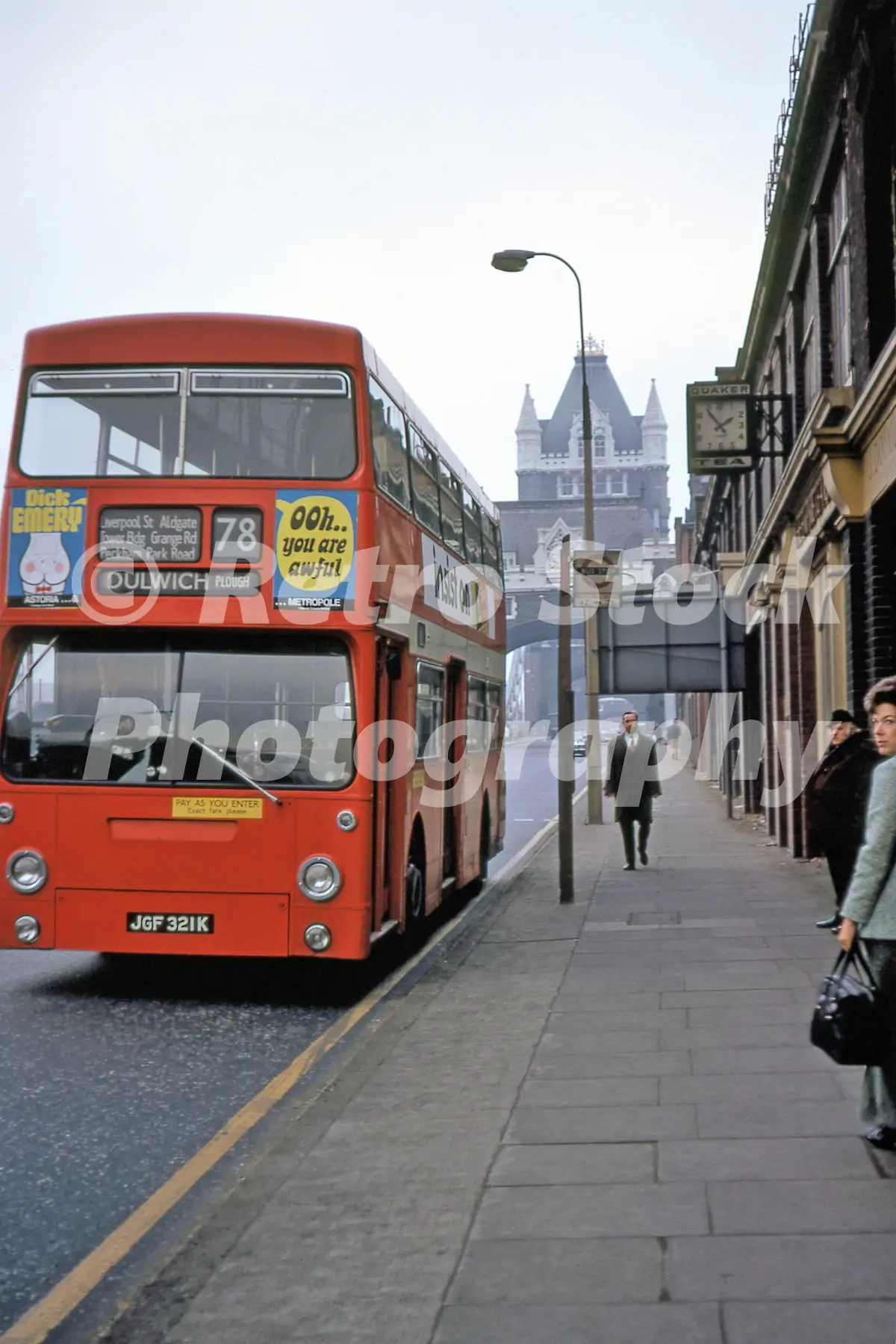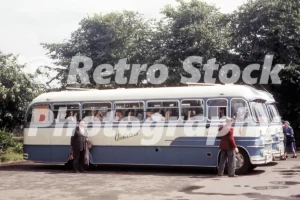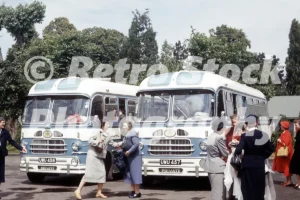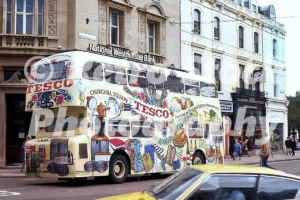The Daimler Fleetline was one of the most influential double-decker buses of the post-war period in Britain. Introduced in the early 1960s, it was among the first successful rear-engined double-decker buses, a design that would come to dominate urban bus fleets for decades. With its modern layout, improved driver visibility, and capacity for one-person operation, the Fleetline marked a turning point in British bus design and helped shape the public transport landscape of the late 20th century.
Background and Development
In the late 1950s, operators across the UK were beginning to look for alternatives to traditional front-engined buses, which required both a driver and a conductor. Rising labour costs and the need for more efficient operations pushed manufacturers to explore rear-engined, front-entrance designs that would allow for driver-only operation.
Daimler (by then part of the BSA group) responded with the Fleetline, officially launched in 1960. It was based on a new design philosophy that placed the engine at the rear of the chassis, freeing up space at the front for boarding and seating, and paving the way for a flat entrance layout.
Design and Engineering
The Daimler Fleetline featured several innovative features:
-
Rear-mounted engine, usually a Gardner 6LX or 6LXB, or later Leyland power units.
-
A drop-centre rear axle, allowing for a low floor in the rear section.
-
Underfloor automatic gearbox (typically from Self-Changing Gears Ltd or Voith).
-
Designed for use with low-height bodywork, ideal for city routes with height restrictions.
-
Front entrance, enabling one-person operation and improved boarding control.
Most Fleetlines were bodied by leading coachbuilders such as Alexander, Park Royal, MCW, and Northern Counties, giving each operator the ability to customise the layout to suit local needs.
Widespread Adoption
The Fleetline quickly proved popular. Early major customers included:
-
Birmingham City Transport, the launch customer and long-time supporter.
-
London Transport, which bought over 2,500 Fleetlines during the 1970s, known as the DMS class.
-
Greater Manchester Transport, West Yorkshire PTE, Tyne and Wear PTE, and many others.
London’s adoption of the Fleetline was particularly significant. While the city had traditionally relied on front-engined Routemasters, the move to rear-engined buses like the Fleetline marked a deliberate shift towards driver-only operation and modern bus technology. However, London’s experience with the Fleetline was mixed—its complex urban environment and heavy loads exposed weaknesses in reliability and maintainability.
Despite this, outside London the Fleetline enjoyed a solid reputation for durability and ease of maintenance.
Changes and Variants
Over the course of its production run from 1960 to 1983, the Fleetline went through several updates:
-
CRG and ERG models: early versions, largely for provincial operators.
-
DMS class: specific to London Transport, with automatic gearboxes and dual doors.
-
FE30 series: updated version under Leyland’s ownership, following the merger of Daimler and Leyland Bus in 1968.
Some tri-axle and single-decker variants were also built for export markets in Asia and Africa.
Decline and Withdrawal
Production of the Fleetline ceased in 1983, as newer models such as the Leyland Olympian, MCW Metrobus, and Dennis Dominator came to market. Many operators began retiring their Fleetlines in the late 1980s and early 1990s, though some saw extended service into the 2000s.
The London DMS Fleetlines were retired earlier than expected—many were sold to operators outside the capital or into the second-hand market, where they often enjoyed a more successful second life.
Preservation and Legacy
Today, the Daimler Fleetline holds a special place in the history of British public transport. Many examples have been preserved by bus museums and enthusiasts, with some fully restored to their original liveries. Their square, purposeful design and unmistakable Gardner engine note make them a favourite at transport rallies and heritage events.







Reviews
There are no reviews yet.